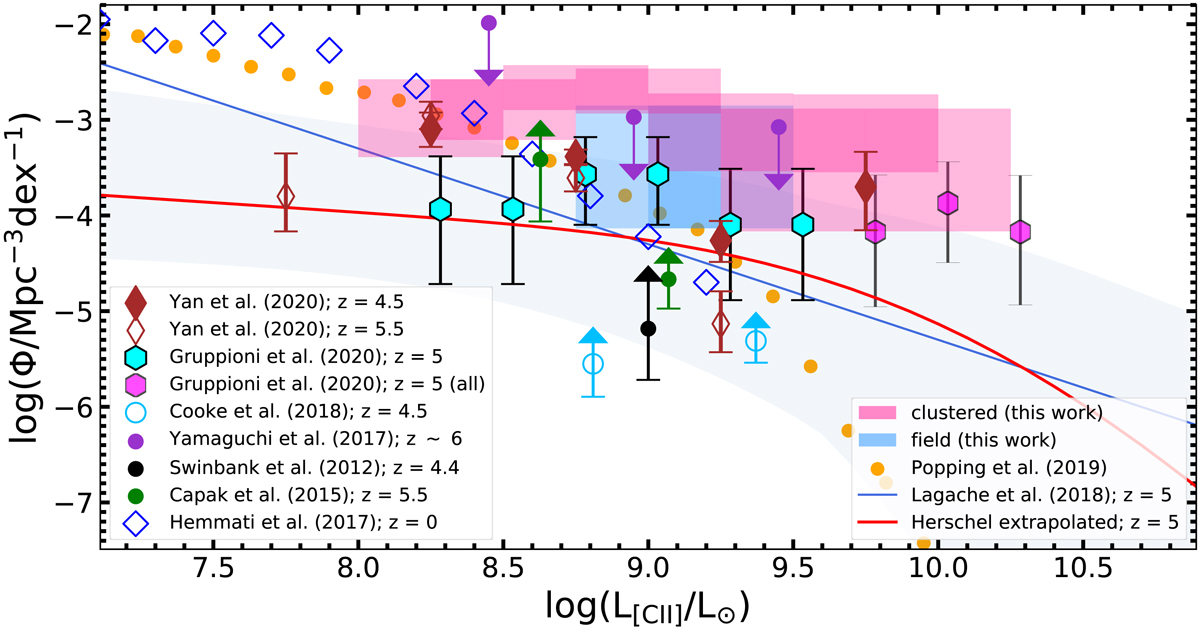Fig. 8.

[C II] LFs at z ∼ 5 from the serendipitous sources in ALPINE compared to other works in the literature. We split the lines in two subsamples, called “clustered” (pink) and “field” (azure), respectively, and we built two separate LFs. Compared to the clustered LF, the field one lies at lower luminosities. We compare our [C II] LFs at z ∼ 5 with other [C II] LFs at high and low-z. Overall, the estimates from the clustered sample lie above the LFs of the ALPINE targets (Yan et al. 2020) likely because they include UV-dark galaxies and because of the clustering effect. On the other hand, the field LF seems to be quite consistent with the targets ones except in the case of the highest luminosity bin. There is agreement between the field [C II] LF and the IR-derived [C II] LF based on the ALPINE serendipitous sources detected in continuum (Gruppioni et al. 2020). The agreement persists at L[C II] > 109.5 L⊙ for the clustered sample if the companions of the central targets are included in the IR-derived [C II] LF of Gruppioni et al. (2020). The clustered LF is up to > 1 dex higher than the local [C II] LF (Hemmati et al. 2017). Also the field LF predicts an excess of [C II] emitters at L[C II] > 109 L⊙, suggesting a possible evolution of the [C II] LF between z ∼ 5 and z ∼ 0. The field LF appears in agreement with the models predictions of Popping et al. (2019).
Current usage metrics show cumulative count of Article Views (full-text article views including HTML views, PDF and ePub downloads, according to the available data) and Abstracts Views on Vision4Press platform.
Data correspond to usage on the plateform after 2015. The current usage metrics is available 48-96 hours after online publication and is updated daily on week days.
Initial download of the metrics may take a while.


